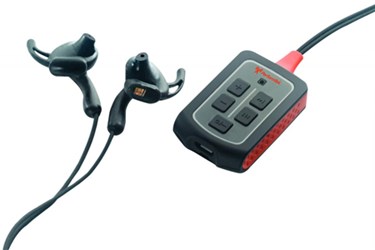Earbuds For Medical Monitoring — Unconventional Design Yields Unique Benefits
By Chuck Seegert, Ph.D.

Wearable biometric sensors for measuring vital signs are becoming increasingly prevalent for exercise and health monitoring. These technologies commonly take shape as bracelets or designs that pass around the chest.
A North Carolina-based company called Valencell, however, is developing a different kind of non-invasive biometric sensing device that is not only more accurate, but also seamlessly blends with everyday living.
How have they done this you may ask?
The answer: Earbuds.
Using earbuds may seem like an odd approach to collecting heart rate or blood oxygenation data, but the anatomical location in the ear provides many advantages. Sensors in the new earbuds are used to measure various characteristics of blood as it passes nearby. Some areas of the ear have different rates of blood flow, which can be used to measure different aspects of a patient’s vital signs. Additionally, designs used around the wrist and chest experience high levels of movement, which can impact their accuracy, while the ear remains relatively still.
The technology behind this device is an optomechanical sensor module small enough to fit in the ear. Developing a device to fit into this small of a space is one of the main challenges that competitors don’t face when designing devices for wrists and other anatomical areas.
The miniaturized sensor package is based on two primary measurement methods: photoplethysmography (PPG) and accelerometry.
PPG is a method of monitoring how blood levels change in the vessels of a tissue, and it does this by shining light on the skin. Whenever the heart pumps, the level of blood increases slightly in the skin. PPG is able to sense this increase and record heart rate and other vital signs. This technology is widely used in hospitals and clinics, though usually data is collected with a probe on the patient’s fingertip.
The accelerometer is active at the same time as the PPG and captures the user’s activity levels. A digital signal monitor then analyzes the data and transfers it to a smartphone for display.
In a recent study published in Medicine & Science in Sports and Exercise, Valencell and collaborators at Duke University used their patented PerformTek sensor technology to demonstrate that total energy expenditure (TEE) and V02 max, or the maximum amount of oxygen consumed, could be accurately measured through the ear.
According to a recent article in the MIT Technology Review, Valencell licenses their PerformTek technology to many companies for use on many parts of the body, including LG’s Heart Rate Monitor Earphone and a pair of earbuds that Intel is currently developing.
Light-based wearable technologies are becoming more prevalent in medical device applications, and though the earbud approach remains novel, it may have tough competition in the near future. Apple has also shown interest in the earbud technology as was recently reported, which may influence the direction of the market.
Image Credit: Valencell, Inc.
